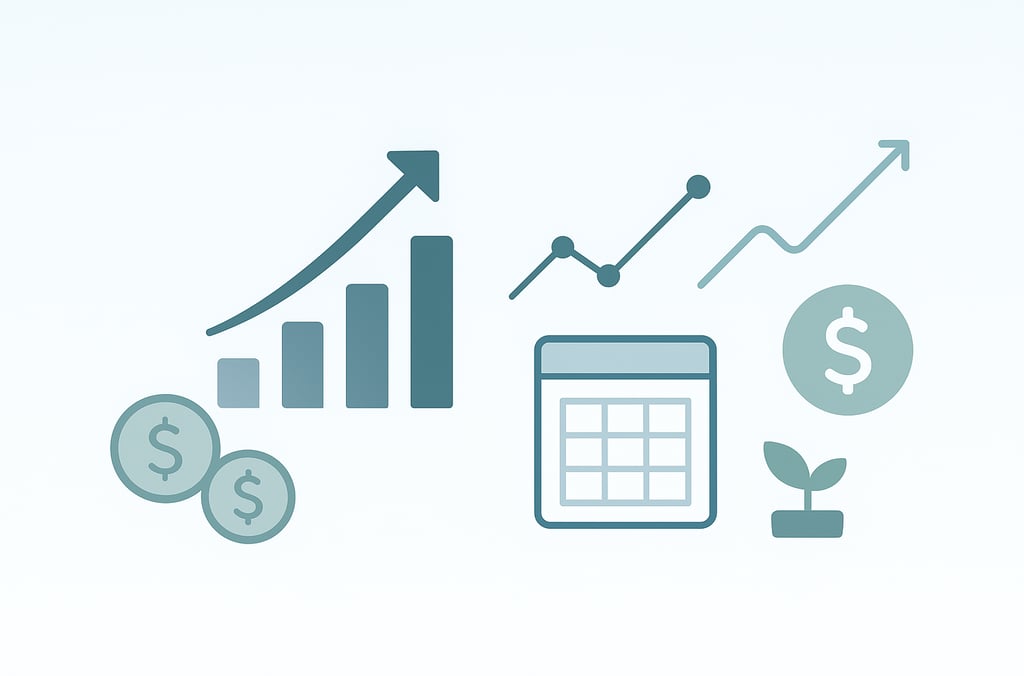How Behavioral Economics Can Save Your Wallet: Financial Decisions You Don’t Even Notice!!
Discover how behavioral economics can transform your finances. Learn how habits, emotions, and unconscious decisions affect your money, and discover practical strategies to save more, invest smarter, reduce debt, and build long-term wealth. Small daily adjustments can have a huge impact—start using the science of money to your advantage today!
11/12/20253 min read


When it comes to personal finance, most advice revolves around saving more, spending less, or investing wisely. But there’s a little-explored field that can radically transform the way you manage money: behavioral economics.
Behavioral economics studies how our habits, emotions, and cognitive biases influence financial decisions, often without us even realizing it. In other words, it’s not just about math or budgeting—it’s about understanding how our brain reacts to money.
If you learn to identify these behavioral traps, you can save more, invest smarter, and make better financial decisions without feeling trapped by spreadsheets or extreme sacrifices.
1. The “Loss Hurts More Than Gain” Effect
Have you ever noticed that losing $100 feels worse than gaining $100 feels good? This phenomenon is called loss aversion and explains why many people sell investments out of fear or avoid opportunities because of insecurity.
Practical example:
If you own stocks and they drop 10%, the emotional reaction tends to be far more intense than if the same stocks had risen 10%. Understanding this helps you avoid impulsive decisions and stick to a long-term strategy.
Tip: set pre-defined rules for investing, like loss or gain limits, to prevent emotional reactions.
2. The Power of Anchoring
Our brains tend to judge values based on reference points, even if they’re irrelevant. This is called the anchoring effect.
Example:
A store advertises a smartphone for $600 but then offers it for $360. You feel like you’re getting a great deal, even if the real market price is $300. The initial $600 price acted as a mental anchor.
Tip: always research and compare prices before buying. Don’t be swayed only by the “discount” displayed.
3. The Illusion of “Extra” Money
Bonuses, tax refunds, or any unexpected money is often spent impulsively because our brains see it as “free money” or “not really mine.” This is known as mental accounting.
Smart strategy:
Treat extra money as investment or emergency savings before spending.
Split it: 50% for investments, 30% for leisure, and 20% for a donation or something meaningful.
This builds discipline without frustration.
4. Micro-Habits That Make a Big Difference
Often, small changes have a greater impact than drastic decisions. Behavioral economics shows that consistent micro-habits can transform finances over time.
Examples of micro-habits:
Review your daily expenses for 5 minutes.
Automatically transfer a percentage of income to investments.
Cancel subscriptions you don’t regularly use.
These habits create financial discipline without stress, making money management almost automatic.
5. Financial Procrastination: How to Automate and Overcome It
Many people know they should save or invest but always postpone it. Financial procrastination is natural, but it can be countered with automation.
How to apply it:
Set up automatic transfers to savings or investments as soon as you receive your paycheck.
Use finance apps that categorize expenses and alert you to unnecessary spending.
This reduces the temptation to spend impulsively and keeps your goals on track.
6. The Impact of Emotions on Major Financial Decisions
In moments of stress or excitement, it’s common to make rash financial choices. For example:
Buying an expensive car to celebrate a promotion.
Selling stocks during a market drop out of fear.
Tip: create a list of “emotional” decisions and wait at least 48 hours before acting. This helps you make rational choices even under pressure.
7. How to Use Behavioral Economics to Invest Better
Successful investors apply behavioral economics principles:
Conscious diversification: avoids the temptation to put everything in one asset.
Periodic rebalancing: prevents decisions based solely on short-term emotions.
Scenario planning: simulates gains and losses to reduce anxiety.
Even beginner investors can benefit by setting clear rules, ignoring market volatility, and avoiding comparisons with others’ performance.
8. The Science of Delayed Gratification
One of behavioral economics’ most important principles is delayed gratification: postponing small rewards now to achieve greater gains in the future.
Practical example:
Avoid spending $40 now and invest it in a fund that yields 10% annually. In 5 years, that amount could grow significantly. Small, consistent choices have exponential effects over time.
9. Behavioral Strategies to Reduce Debt
Debt is often impulsive and emotional. Some strategies can help:
Visualize progress: tracking debt reduction creates motivation.
Automatic payments: reduce late fees and stress.
Break large debts into smaller goals: makes repayment less overwhelming.
Conclusion
Behavioral economics reveals that finance is not just about numbers, but also about habits, emotions, and unconscious decisions. Understanding how your brain reacts to losses, gains, and incentives helps you make smarter choices, save more, and invest better.
Start small: automate 10% of your income for investments, track your daily expenses for a week, or plan major purchases with 48 hours’ notice. Small daily adjustments can have a huge impact on your financial health.
💡 Final Tip: wealth isn’t just about how much you earn—it’s about how you think and decide about money. Use behavioral economics to make your brain work in your favor.